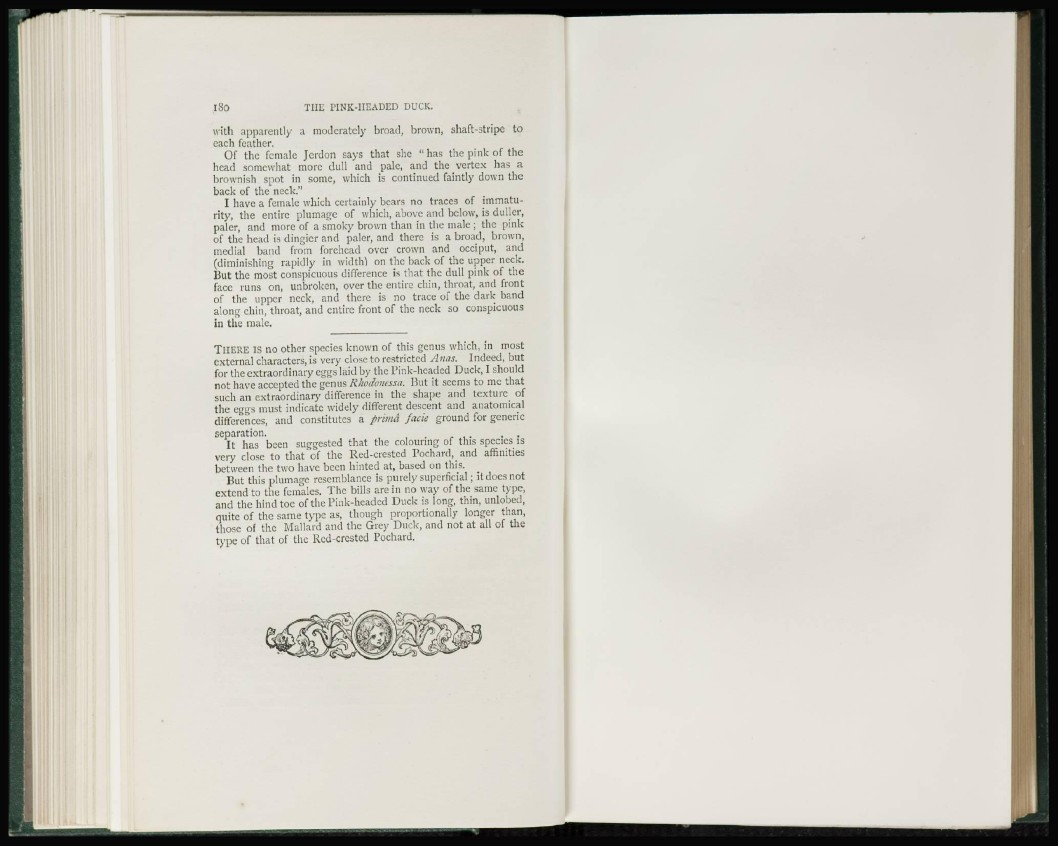
i8o THE PINK-HEADED DUCK.
with apparently a moderately broad, brown, shaft-stripe to
each feather.
Of the female Jerdon says that she " has the pink of the
head somewhat more dull and pale, and the vertex has a
brownish spot in some, which is continued faintly down the
back of the neck."
I have a female which certainly bears no traces of immaturity,
the entire plumage of which, above and below, is duller,
paler, and more of a smoky brown than in the male ; the pink
of the head is dingier and paler, and there is a broad, brown,
medial band from forehead over crown and occiput, and
(diminishing rapidly in width) on the back of the upper neck.
But the most conspicuous difference is that the dull pink of the
face runs on, unbroken, over the entire chin, throat, and front
of the upper neck, and there is no trace of the dark band
along chin, throat, and entire front of the neck so conspicuous
in the male.
THERE IS no other species known of this genus which, in most
external characters, is very close to restricted Anas. Indeed, but
for the extraordinary eggs laid by the Pink-headed Duck, I should
not have accepted the genus Rliodonessa. But it seems to me that
such an extraordinary difference in the shape and texture of
the eggs must indicate widely different descent and anatomical
differences, atid constitutes a primA facie ground for generic
separation.
It has been suggested that the colouring of this species is
very close to that of the Red-crested Pochard, and affinities
between the two have been hinted at, based on this.
But this plumage resemblance is purely superficial; it does not
extend to the females. The bills are in no way of the same type,
and the hind toe of the Pink-headed Duck is long, thin, unlobed,
quite of the same type as, though proportionally longer than,
those of the Mallard and the Grey Duck, and not at all of the
type of that of the Red-crested Pochard.